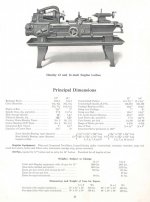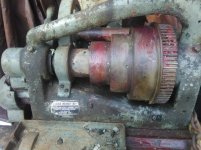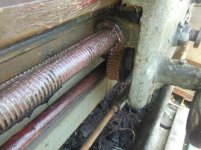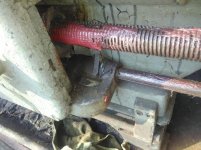toolguy07:
Thank you for the additional pictures, I can now give you a more exact date of manufacture. The critical bit of information I was looking
for was on the Index Plate. The picture you posted of the Index Plate in your original post, did not show the lower right hand corner
clearly. The second picture you posted of the Index Plate clearly shows the Feed at 5 times, that along with the 46 tooth gear to cut the
11-1/2 thread fixes the year of manufacture at 1905. While it is true that the 5 times rate was standard on the 16 inch Cone Head even in
1898, the gear combination changed in 1904 with the introduction of the Compound Gear Box. Your lathe is an early Tie Bar, which means
that it was built in 1905 or later, in fact Tie Bars were built during WW2. The limiting factor in this case is the fact that the Engineering Department started the design work on the new Geared Head Lathe and several thing were done to standardize the Cone Heads and
the Geared Heads. As early as September 24, 1903, Leadscrews were being converted from seven threads per inch to six threads per inch.
By June 20, 1905, even the 12 inch lathes had been changed over. Another simple test for a 1905 lathe is to check the Intermediate Gear
to see if it was fitted with a Bronze Brushing, these became standard after February 1, 1905. Now for the clincher, by 1906 the Index Plates were changed to read 6 Times instead of 5 Times. There is an Engineering Department note to the effect that some lathes with Serial Numbers between 6600 and 7022 may have the older Leadscrews installed, please check the number of threads on your Leadscrew. These Serial Numbers represent lathes built between October 1904 and May 1905. This is just another way to determine the manufacturing date without the Serial Number.
Hendeyman





























